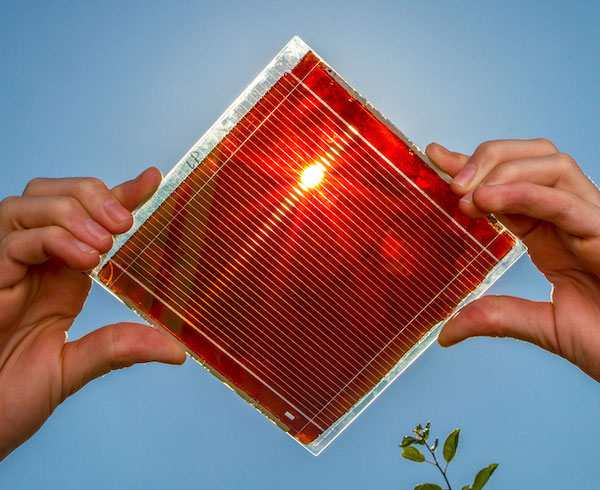The sun provides an abundance of energy, and the energy they provide comes in different forms, such as sunlight which can be used to generate electricity through solar panels, or heat which can then be stored through the use of concentrated solar thermal power plants [1]. As of 2021, solar panel usage has seen an immense growth of 486% in 3 years since 2018 [2]. Total solar panel usage in the Indonesian residential industry has reached 3472 houses with power generation of up to 26.51 megawatt peak (mWp) [2].
The most commonly used type of solar panel cells include polycrystalline solar cells and monocrystalline solar cells, with the latter having a better efficiency rate, typically around 15-20% [3]. A better efficiency rate means more power for each square meter of solar cells, which also means space efficiency.
As of right now, there is a material that is set to replace both polycrystalline and monocrystalline solar cells as a market leader due to it being the most efficient while also staying cheap, the material is named perovskite. Perovskites were
researched for the first time in 2006, they were identified as absorber materials, with results starting to show in 2009 [4]. Perovskite is among the most promising photovoltaic candidates, with an efficiency of 30% [5].

Figure 1.1 Perovskite Solar Cells (source : Sollianc)
Indonesia could benefit from using perovskite solar cells when compared to monocrystalline or polycrystalline solar cells, here are 5 points as to why perovskite is favored compared to previous generation solar
cells:
- Efficiency
Perovskite solar cells have higher power conversion efficiency when compared to traditional silicon-based solar cells.
- Cost-Effective
Perovskite cells are easier and cheaper to manufacture compared to traditional solar cells, making them a more affordable option for energy generation.
- Flexibility
Perovskite solar cells can be produced on flexible substrates, making them ideal for applications where conventional solar cells cannot be used due to the shape of curvature of the surface.
- Sustainable
Perovskite solar cells are made from abundant and sustainable materials, reducing the reliance on finite resources and reducing the carbon footprint associated with production.
- Improving Technology
Perovskite solar cell technology is advancing rapidly and has the potential to surpass traditional solar cells in terms of efficiency and cost in the near future.
In short, perovskite appears to be the only logical step forward in terms of solar cell technology usage, as it improves on a lot of different aspects of solar cell technology and needs.
References
[1] Department of Energy, “Concentrating solar-thermal power basics,” Energy.gov, 2019. [Online].
Available:
https://www.energy.gov/eere/solar/concentrating-solar-thermal-power-basics. [Accessed: 06-Feb-2023].
[2] S. Purnama, “Pertumbuhan sel surya di indonesia capai 486 persen dalam tiga tahun,” Antara News, 26-Jul-2021. [Online].
Available:
https://www.antaranews.com/berita/2288702/pertumbuhan-sel-surya-di-indonesia-capai-486-persen-dalam-tiga-tahun. [Accessed: 06-Feb-2023].
[3] geotherm admin, “Monocrystalline vs polycrystalline: Which solar panel is better?,” Geotherm, 29-Apr-2022. [Online].
Available:
https://geothermhvac.com/mono-vs-poly-better/#:~:text=Monocrystalline%20solar%20panels%20have%20the,more%20efficient%20in%20warm%20weather. [Accessed: 06-Feb-2023]
[4] “Perovskite solar cells: An in-depthguide + comparisons with other techs,” Solar Magazine, 01-Sep-2022. [Online].
Available:
https://solarmagazine.com/solar-panels/perovskite-solar-cells/. [Accessed: 06-Feb-2023].
[5] M. Gallucci, “Perovskite solar out-benches rivals in 2021,” IEEE Spectrum, 24-Jun-2021. [Online].
Available:
https://spectrum.ieee.org/oxford-pv-sets-new-record-for-perovskite-solar-cells. [Accessed: 06-Feb-2023]
This article is written by :
Reza Radinka
Sales & Marketing Staff




.webp)
.webp)
